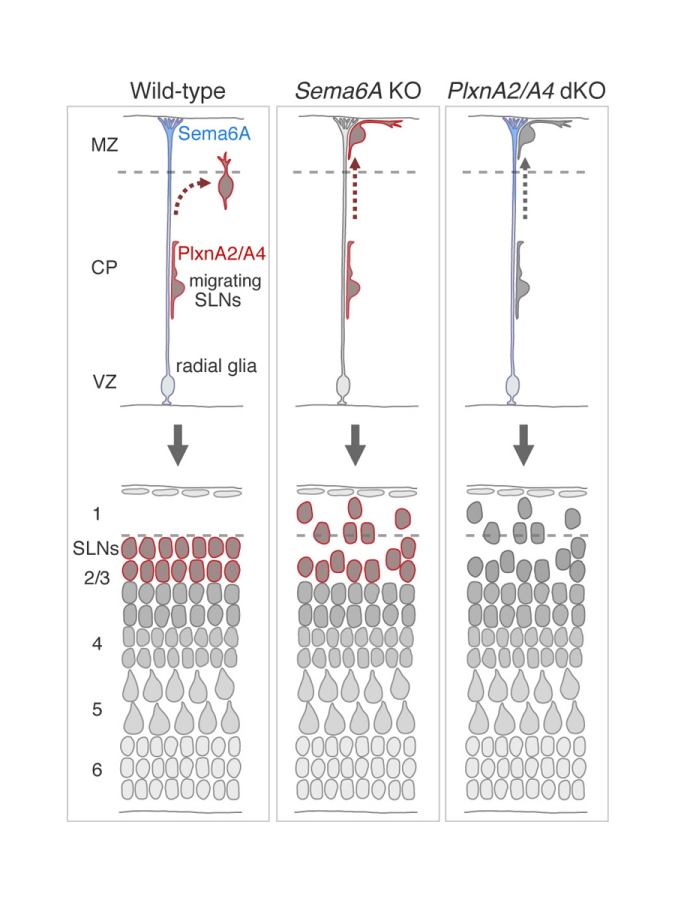Repulsive signal contributes to proper termination of neuronal migration
| Journal | iScience 21:359-374 (2019) |
|---|---|
| Title | Repulsive signal contributes to proper termination of neuronal migration |
| Laboratory | Cellular and Molecular Neurobiology Group |
Abstract
Precise regulation of neuronal migration termination is crucial for the establishment of brain cytoarchitectures. However, little is known about how neurons terminate migration. Here we focused on interactions between migrating cortical neurons and their substrates, radial glial (RG) cells, and analyzed the role of Plexin A2 and A4 (PlxnA2/A4) receptors and their repulsive ligand, Semaphorin 6A (Sema6A), for this process. In both PlxnA2/A4 double-knockout and Sema6A mutant mice, the outermost cortical plate neurons ectopically invade layer 1 at a stage when they should reach their destinations. PlxnA2/A4 proteins are abundantly expressed on their leading processes, whereas Sema6A mRNA is enriched in RG cell somata. Cell-targeted gene expression and conditional knockouts indicate critical roles for these molecules. We hypothesize that the timely appearance of repulsive signaling mediated by Sema6A-PlxnA2/A4 weakens migrating neuron-RG cell interactions, leading to migration termination.

Fig. 1
Cortical neurons migrate toward the pial surface along radial glial cell fibers. Sema6A on radial glial cells and PlxnA2/A4 on migrating neurons are necessary for proper migration termination of superficial layer cortical neurons.
| Authors | Yumiko Hatanaka (1, 2, 3), Takahiko Kawasaki (4), Takaya Abe (5), Go Shioi (5), Takao Kohno (6), Mitsuharu Hattori (6), Akira Sakakibara (2), Yasuo Kawaguchi (3), Tatsumi Hirata (4)
|
|---|---|
| PubMed | 31698249 |
